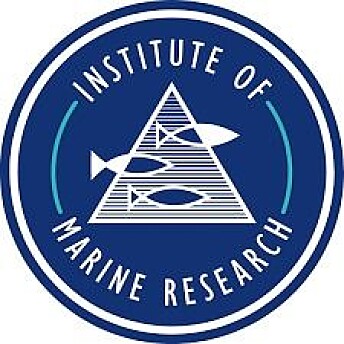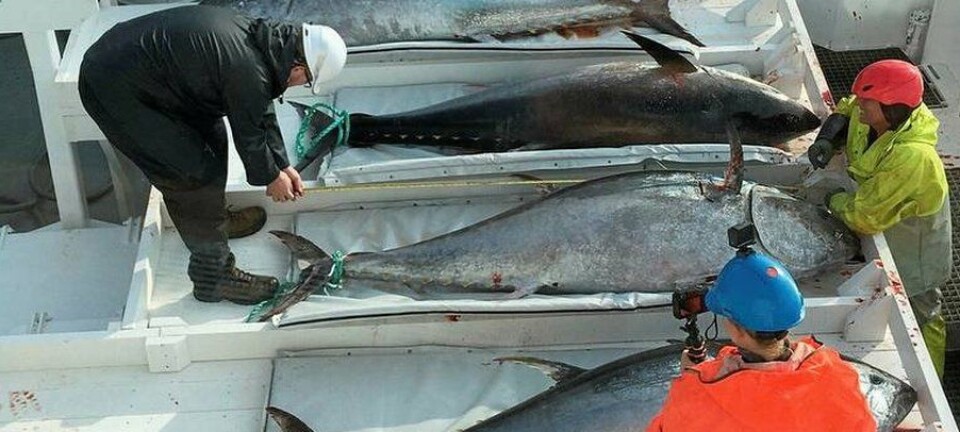This article is produced and financed by the Institute of Marine Research - read more
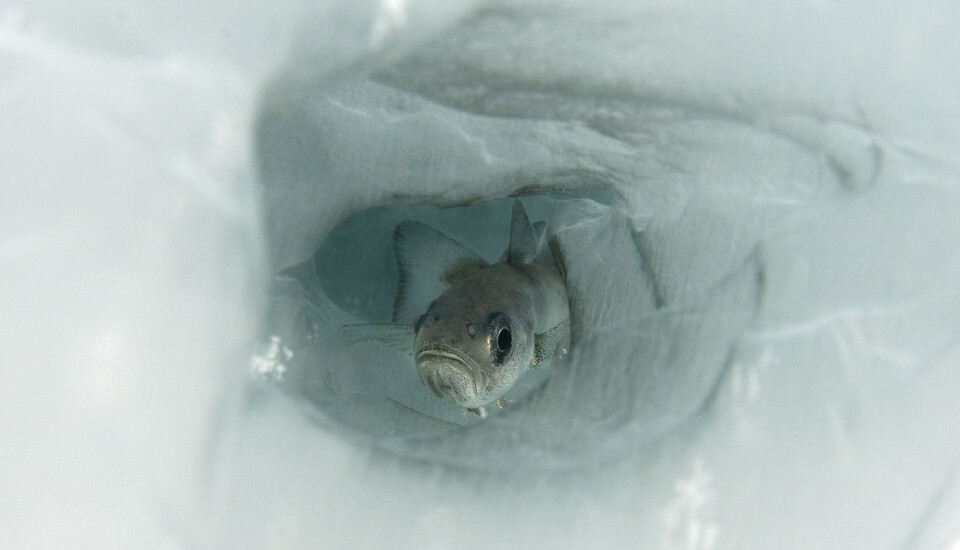
Polar cod in climate crisis
The polar cod, a key species in the Barents Sea ecosystem, is struggling with recruitment due to warmer waters and declining sea ice cover.
That is the main conclusion of an award-winning research article authored by four researchers at the Institute of Marine Research (IMR).
After being spawned under the cover of the sea ice, the Polar cod (a smaller cousin of the better known Northeast Arctic cod) grows quickly on a diet consisting of zooplankton. In turn, it provides food for fish, sea birds, seals and whales.
The fact that this shy fish is struggling to reproduce due to the decline in winter sea ice cover – combined with fewer larvae reaching adulthood due to warmer waters in summer – is therefore bad news for many other species apart from the Polar cod itself.
“Unfortunately, climate projections suggest that the Barents Sea will become warmer and virtually ice-free as early as in 2030. The outlook for this cornerstone of the Arctic food chain is therefore bad”, concludes marine scientist Mats Huserbråten, one of the authors of the article.
The researchers used a climate model showing how the temperature and sea cover has changed between 1990 and 2017:
Tracing the birthplace of the fish
The article, which was named “Publication of the Year” at the Institute of Marine Research’s annual celebration of marine science recently, builds on extensive research work done at the institute over a number of years.
Huserbråten and his colleagues combined data from the annual ecosystem surveys in the Barents Sea with models that simulate environmental factors such as ocean currents and water temperatures. By doing this, they were able to estimate where the cod were most likely to have spawned in the spring, and how the currents had carried the eggs, larvae and juveniles before they were caught in a net in the autumn.
The researchers could then analyse how the spawning grounds in the southeast and northwest of the Barents Sea had varied and moved from year to year.
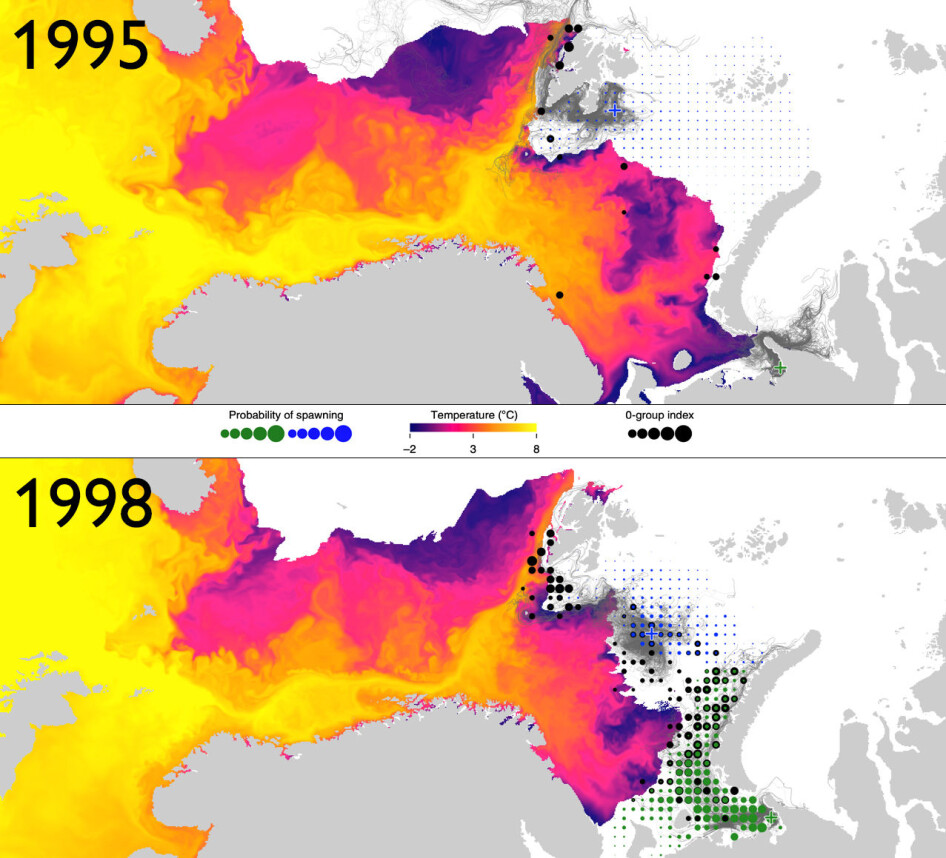
Spawning further north
“In 1995, for example, the recruitment of new Polar cod was the lowest ever observed, which was probably linked to the record-low ice cover in the southeast Barents Sea”, says Huserbråten:
“In 1998, on the other hand, there was record-high recruitment in the southeast. That coincided with the highest sea ice cover since the 1980s.”
In the spawning grounds east of Svalbard, the ice has been more stable, but rising temperatures and increased grazing have probably caused spawning to move further and further north towards the Arctic Ocean.
“We observed a clear negative correlation between recruitment of Polar cod and the maximum summer temperature. In some years, the modelled summer temperature was several degrees above the larvae’s tolerance range”, adds Huserbråten.
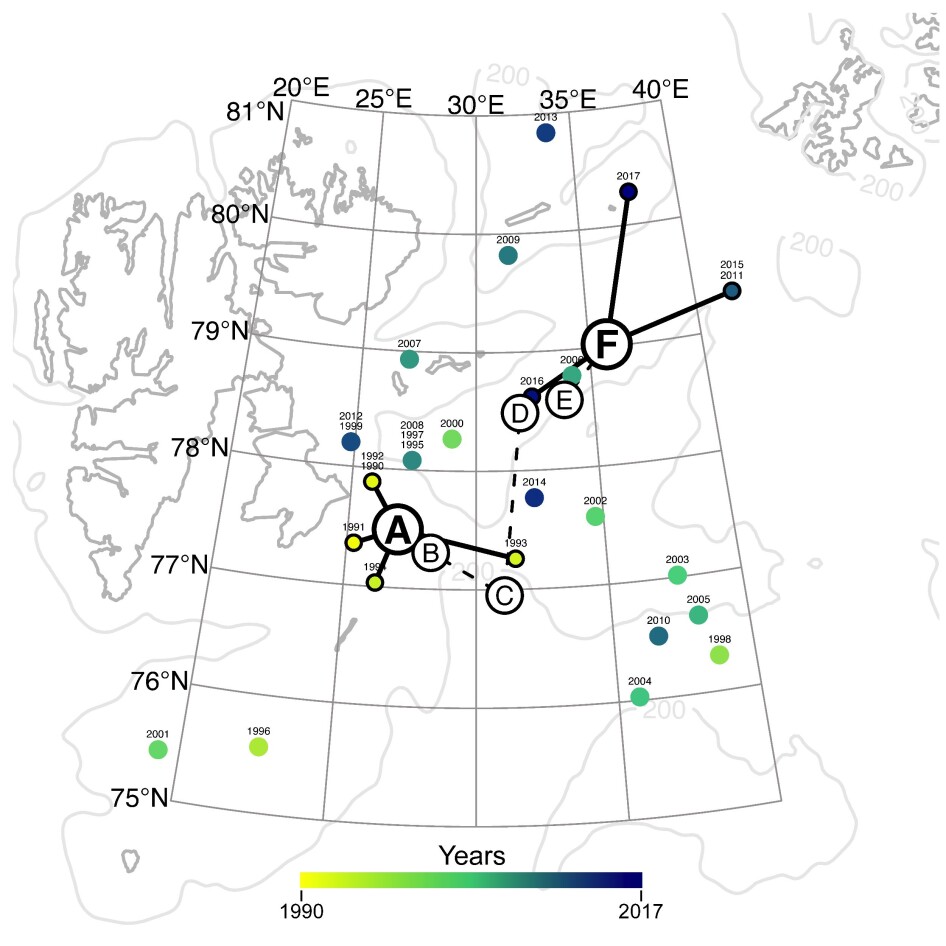
Growing pressure on Arctic species
There are clear trends of declining ice cover and rising temperatures over the period studied by Huserbråten and his colleagues. Projections suggest that those trends will continue far into the future. The article includes a reference to research carried out by Anne Britt Sandø of the Institute of Marine Research, who has looked at how future climate change will influence ocean currents and water temperatures in the Barents Sea.
In recent years, rapid climate change in the high north has sparked the interest of cruise operators, shipping companies and the petroleum industry. This growing human activity, on top of climate change, is putting further pressure on the Polar cod and other vulnerable species in the Arctic.
“Together, these factors mean we need a better understanding of the possible impacts on Arctic ecosystems, to provide a basis for sustainable management of the high north. We have excellent tools at our disposal in the shape of models that can help us to understand trends and long time series of survey data”, says Huserbråten.
Reference:
M. Huserbråten et.al: «Polar cod in jeopardy under the retreating Arctic sea ice». Commununications Biology, 2019, 2: 407. doi:10.1038/s42003-019-0649-2







